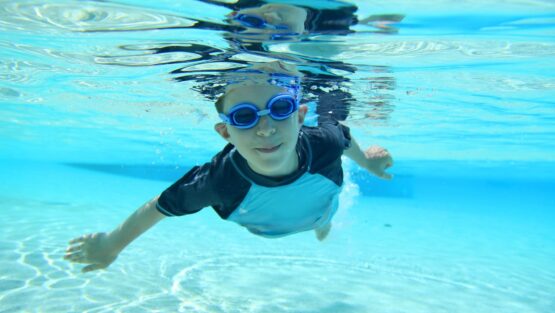16 September 2019
16 September 2019
When the school year begins and the emotions associated with completing the school kit disappear, parents face another dilemma - the choice of extracurricular activities. What type of activities for a child should you choose to help them start their future? Doctors say: SPORT!
The data published a few years ago by the Supreme Audit Office are alarming - every third Polish high school student does not attend physical education classes! Unwillingness to exercise and notorious avoidance of physical activity is a simple way to obesity and serious health problems in the future. How to prevent it? Make your child fall in love with sports!
Not only sport teachers and sport infrastructure play a huge role here, but first and foremost parents and behavioral patterns that the child learns at home. If you are an active person - you regularly run, swim, ride a bike and you try to organize your free time so that physical activity dominates – then for your child sport will also become something natural in everyday functioning.
Children love to move - their desire to gain space, to be in motion, jump, run, climb, roll is impressive for us - adults. Let's not limit their natural needs - let's praise and encourage them to be active. The recommendations of the World Health Organization (WHO) say that in adolescence, for normal psychomotor development, the child should spend seven hours a week on sporting activities. Swimming in the pool is already recommended for six-month babies. When a child walks and runs confidently - encourage them to run by playing tag. A three-wheeled scooter is suitable for a two-year-old, and a three-year-old child can start the adventure with a bicycle - the running one, without pedals.

There will be time for choosing a specific sport. Up to the age of six, a child should participate in general development activities which include such elements as: jumps, squats, slopes, running, and crawling. Their goal is to shape motor features: speed, agility, flexibility, jumping, strength and endurance – says orthopedic specialist Łukasz Luboiński, head of the Carolina Medical Center Clinic. – Diversity is very important - the later the child begins to specialize in one activity, the better will be one’s overall fitness – he adds. American scientists study shows that early specialization in sport promotes injuries - people who have been devoted to one particular sport at an early age are more likely to experience overload injuries.
Watch out for unilateral sports! If the child likes to ride a scooter – it should be a three-wheeled one that allows riding on both legs. If a child is interested in playing tennis, badminton, Ping-Pong (table tennis), throwing a javelin or training shot put, then we should wait with more serious training until the child reaches the age of twelve. - Earlier, asymmetrical muscle development may disturb the normal growth and development of the skeleton – emphasizes Dr. Luboiński.
Sport shapes the child's character and increases his immunity. But not only that! It is beneficial when it comes to the development of the musculoskeletal system, especially in the context of preventing posture defects. – The human body is a system of connected vessels - dysfunction of one organ over time can cause the occurrence of serious pathologies in others. Flat feet can cause pain not only of the feet, but also of the calves and spine. That is why holistic support for the development of the musculoskeletal system in children is so important. Sport is invaluable here – explains Katarzyna Goździak-Sobieraj, a physiotherapist from the Carolina Medical Center, specializing in children's rehabilitation.
Encouraging children to spend time actively is not about raising a professional athlete who will win the medals of the Olympic Games in the future - as doctors say, professional sport has little to do with health. It's all about the proper development of your child - both physical and mental. The work you now put into instilling a passion for sport in your child will bear fruit in the future.